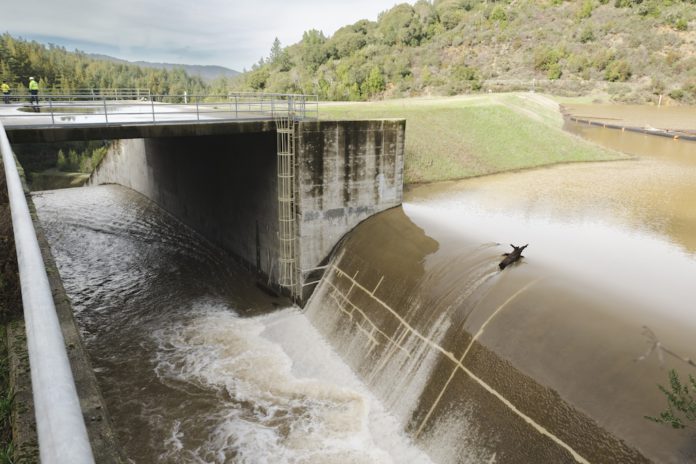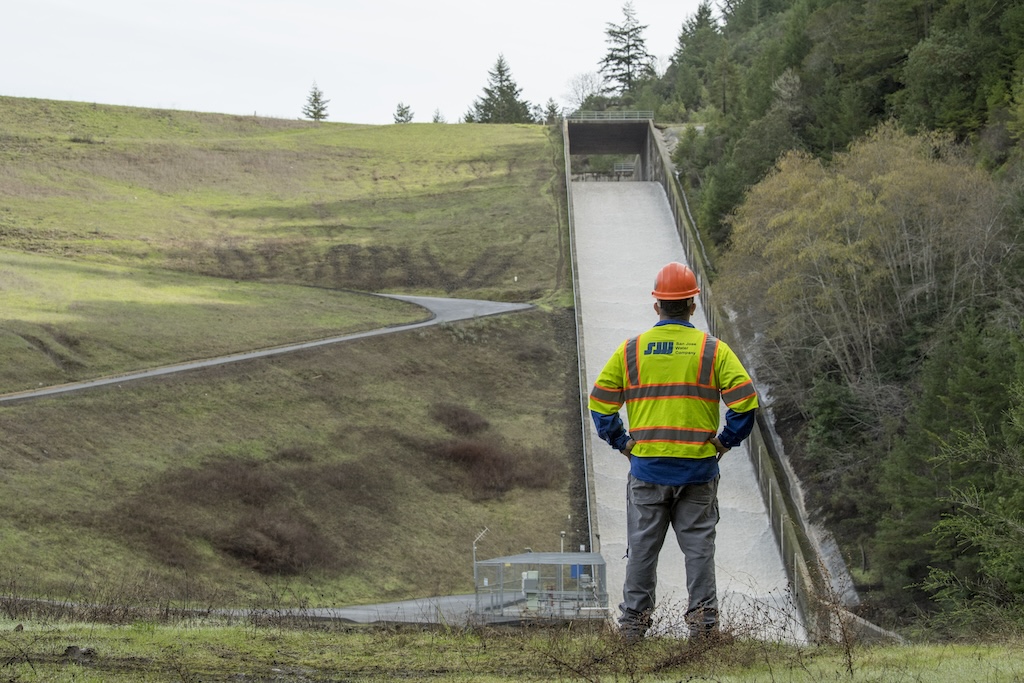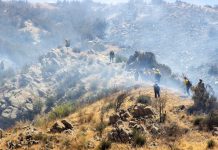
In nature, water always contains dissolved minerals and nutrients. Water “hardness” is determined by the concentrations of minerals present in a particular water source—specifically calcium and magnesium. Simply put, hard water is mineral water that comes from your tap.
Water containing high amounts of calcium and magnesium leaves behind solid calcium carbonate deposits when it evaporates. When classifying water, the calcium and magnesium levels are typically reported in terms of their equivalent value to calcium carbonate (CaCO3) present in parts per million (ppm), which roughly translates to milligrams per liter (mg/L):
- 0 to 60 mg/L CaCO3 is classified as soft water
- 61 to 120 mg/L is classified as moderately hard water
- 121 to 180 mg/L is classified as hard water
- 180 mg/L and up is classified as very hard water
Water hardness is a function of geology. Minerals in soil and rock in a particular region will naturally be present in that region’s groundwater. All four soft-to-hard classifications are typical in California groundwater, depending on the source region.
Source Characteristics
At San Jose Water, we supply drinking water to over a million people in the Greater San Jose metropolitan area using three sources: mountain surface water, local aquifers and imported surface water.
Throughout the year, SJW conducts thousands of tests across these sources to ensure compliance with state and federal water quality, and safety standards. We also test for secondary standards related to aesthetic water qualities—such as taste, odor and color—which do not pose any health risks. Water hardness falls under these secondary standards.
All three of our sources provide high-quality water, but each has unique characteristics influenced by its origin.
Our mountain surface water comes from the Los Gatos Creek Watershed, which stretches along the local Santa Cruz

Mountains roughly east of Summit Road. This mountain water averaged 133 CaCO3 mg/L and ranged from 107-158 mg/L last year. It’s classified as hard water.
Our local aquifer water is collected from SJW wells throughout the valley floor, drawing water from the Santa Clara Groundwater Basin, and averages 376 CaCO3 mg/L. In 2023, the hardness of water from different wells ranged from 210 to 503 mg/L of CaCO3, classifying it as very hard water.
Finally, the Santa Clara Valley Water District (aka Valley Water) supplies our imported surface water. This water mainly comes from Sierra snowmelt sent through the conveyance infrastructure of the State Water Project and the Central Valley Project. This water is the closest to being considered soft, with an average of just 86 mg/L of CaCO3. Last year, its hardness ranged from a very soft 37 mg/L to a moderately hard 117 mg/L.
For SJW customers, where you live determines your primary water source. Those in the higher elevations of our western-most service area primarily receive mountain surface water. Residents in East San Jose, Downtown San Jose, and the Cambrian and Willow Glen areas primarily receive local aquifer water. Most residents in Cupertino, Saratoga, Campbell, West and South San Jose, as well as the Berryessa area, primarily receive imported surface water.
All our water sources are carefully managed, but depending on your address, your water may be much more soft (or hard) than your neighbor’s.
Neither type of water is “better” overall. Some people prefer hard water because it is an excellent source of essential minerals for bone, heart and digestive health. Some like soft water because it rinses more easily and causes less mineral buildup or “scale” in appliances and plumbing. Each has its pros and cons.
Why Not Soften the Water?
We understand that hard water can be a concern for many of our customers, especially those receiving very hard aquifer water. At San Jose Water, we’ve dedicated significant time and research to exploring large-scale water-softening processes. However, implementation is complex and resource-intensive. Each of our well stations would require sophisticated systems to handle large volumes of water and manage byproducts like brine.
Our commitment is to balance the needs and concerns of customers with our responsibility to protect the environment and manage costs. We continually evaluate new technologies and softening solutions as they become available, ensuring that we provide the highest quality water while remaining mindful of economic and environmental impacts.
SJW’s Annual Water Quality Report (www.sjwater.com/waterquality) features a map of our service area color-coded by water source boundaries. You can use it to pinpoint your location to learn more about your water—and the work we’re doing to ensure its high quality, be it hard or soft.
Suzanne DeLorenzo, Ph.D., is the Director of Water Quality at San Jose Water. And FYI, she drinks her water straight from the tap.









